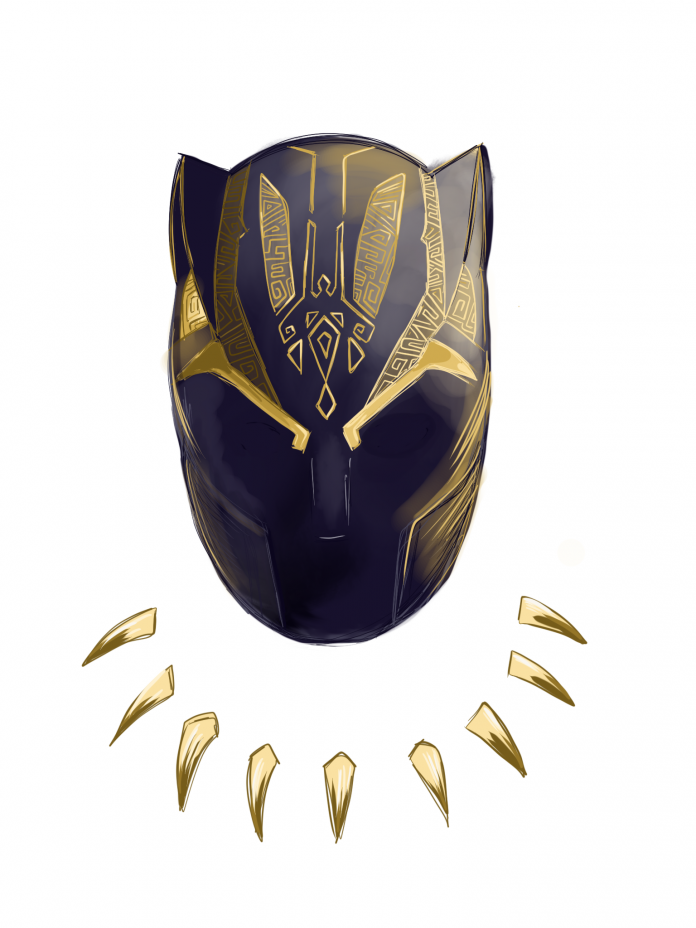With the previous triumph and critical acclaim of “Black Panther” (2018), Marvel’s sequel “Black Panther: Wakanda Forever” (2022) had many expectations from fans and critics alike. These expectations were only heightened due to Marvel’s recent slump in film quality, as many fans have been let down by “Doctor Strange in the Multiverse of Madness” (2022), “Thor Love and Thunder” (2022), “The Eternals” (2021), the list goes on. These factors along with the tragic loss of the original Black Panther, Chadwick Boseman, left many fans (including myself) worried about the future of this superhero’s franchise.
However, after watching the sequel myself, my faith in Black Panther’s future was restored, as the second film is just as much of a triumph as the first. “Black Panther: Wakanda Forever” uses many aspects of its predecessor that made fans fall in love with the series. The issues colonialism imposes on minorities remain the focus of the series, with the film beginning with Wakanda trying to protect its vibranium from being stolen by Western countries.
After the death of their king and the Black Panther, Wakanda and the royal family are vulnerable to attack. Many countries clamor at the opportunity to pillage the country’s supply of vibranium. When the United States scours the Atlantic Ocean for the powerful metal, however, they upset a secret and ancient people who utilize vibranium deposits underwater. The American ship is attacked by blue-skinned aquatic people, and Wakanda is astonished to find that there is vibranium outside of their country.
The film’s antihero Namor, played by Tenoch Huerta, is the ruler of the blue-skinned aquatic beings. His people, the Talokan, are ancient Mesoamerican people who suffered from diseases brought by Europeans in the past and fled its destruction with a gift that turned them into aquatic beings. Wakanda and Talokan have much in common as they both utilize the gift of vibranium and have hidden from the world’s view for some time. But when Namor intimidates Wakanda’s royal family after the U.S.’s attempted theft, conflict ensues between the Talokan and Wakandans.
Now for a warning, do not go see the new Black Panther movie if you are not prepared to shed a tear or two in public. Neither I nor my roommate could keep ourselves from bawling for most of the film’s duration. We, however, were not alone in this struggle as most of the theater could be heard sniffling multiple times throughout. As for myself, I counted eight separate times I got teary-eyed. Between the moment of silence, the Marvel intro dedicated to the late Chadwick Boseman, and having to see the family of King T’Challa cope with the loss of their leader, their brother and their son — the film was very emotionally charged at times.
For example, in the film’s opening sequence, we see Princess Shuri (played by Letitia Wright) rush to craft a new heart-shaped herb for her brother who is terminally ill somewhere off-screen. She is ultimately unsuccessful in her efforts and must deal with the crushing weight of her failure to save her now-deceased brother. This scene establishes the mournful context for the rest of the film and primes its audience for many more tears and losses to come.
The CGI is just as impressive, if not more, as the previous Black Panther movie. Many of Marvel’s new endeavors have had issues when it comes to special effects, but other than a few slightly wonky shots, this film’s CGI was impressive as usual. The film’s stunning visual effects take full form in the tour that Shuri takes in the Talokan’s underwater kingdom. Here, Marvel uses every opportunity to show off the talent of its VFX artists, and how advanced special effects technology has become in recent years. With this underwater kingdom, the audience is shown a beautifully crafted scene that took months of hard labor, which only gives us greater appreciation for the hard work of the set designers and VFX artists behind the film.
While the CGI in “Black Panther: Wakanda Forever” showed numerous possibilities for new technological uses, these new prospects were not used to create a digitized version of Chadwick Boseman. At no point in the movie do we see a CGI Boseman cheering on his sister in her attempts to fill the hole in leadership he left behind. The only time we see or hear King T’Challa is during flashbacks to the previous film when one of his loved ones looks back on fond memories of him. I feel as though this was the best decision the producers and studio could have made in dealing with Boseman’s loss. Fans of other sci-fi films know many other franchises (I’m looking at you, Star Wars) who would jump at the opportunity to flex their special effects muscle by adding a digitally recreated version of a late actor. This absence adds to the emotional weight of the film as a whole, and this fact allows the audience to feel what it is like for the Wakandans to have lost their Black Panther, while also honoring the memory of Chadwick Boseman.
With Namor’s introduction as the first mutant in Marvel’s Earth 616 (since the multiverse is now open, this is the Earth where all the Avengers come from), fans of the franchise are given the first glance into the future potential of the X-Men in the Marvel universe. The crowning of the new Black Panther along with the end credit scene for the film also gives a glimpse into the future of the superhero and his succession as the protector of Wakanda.
Overall, the film was certainly a rollercoaster of emotion. It was well worth the wait and the price of a ticket, with beautifully executed CGI that is best viewed on the big screen. The film’s entrancing plot makes me excited for what the future holds for the Black Panther and the rest of the Marvel Cinematic Universe.


[…] Source link […]